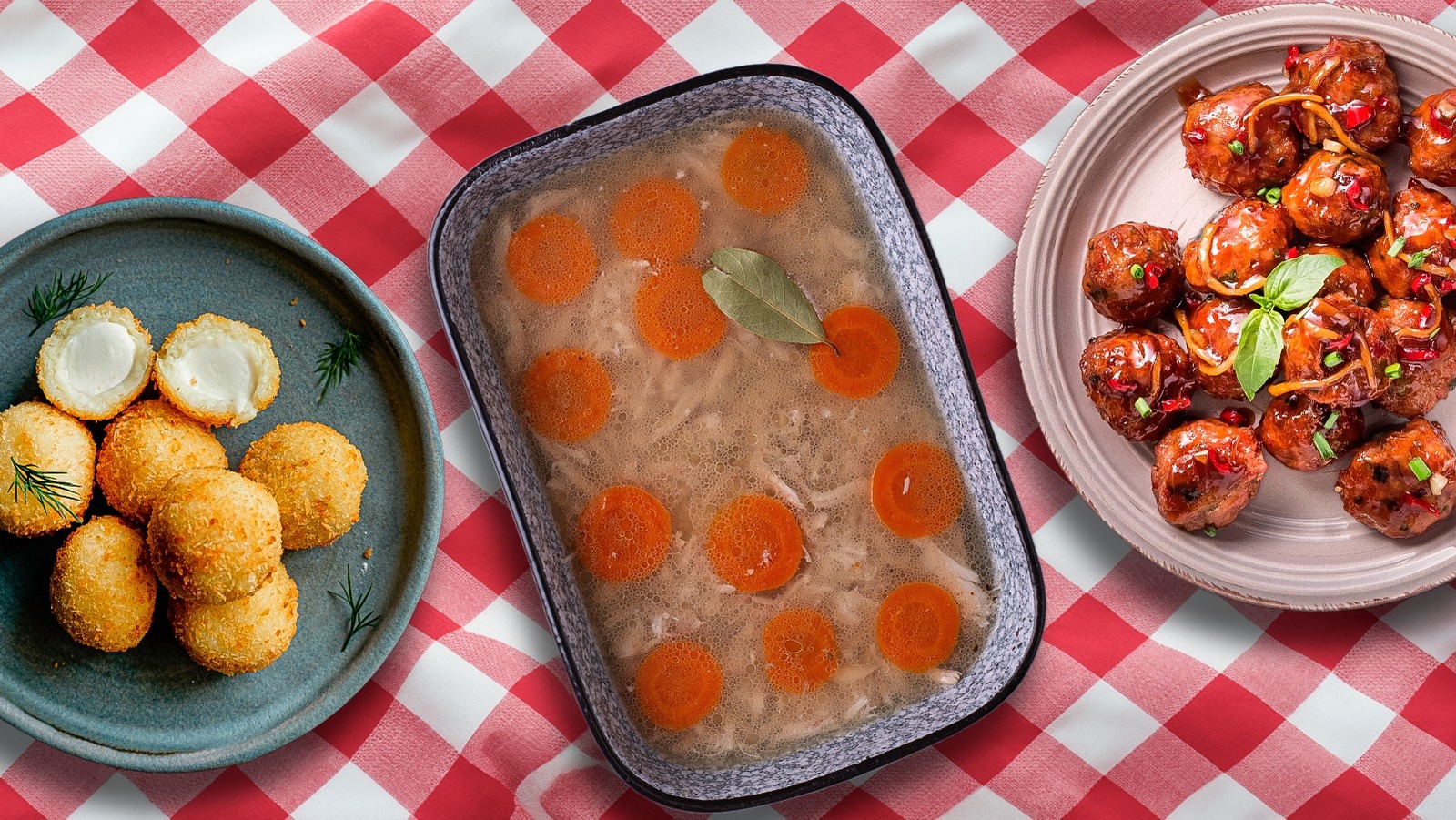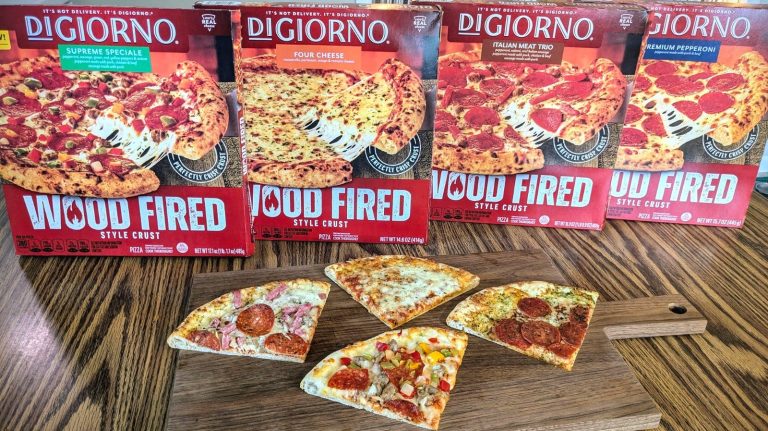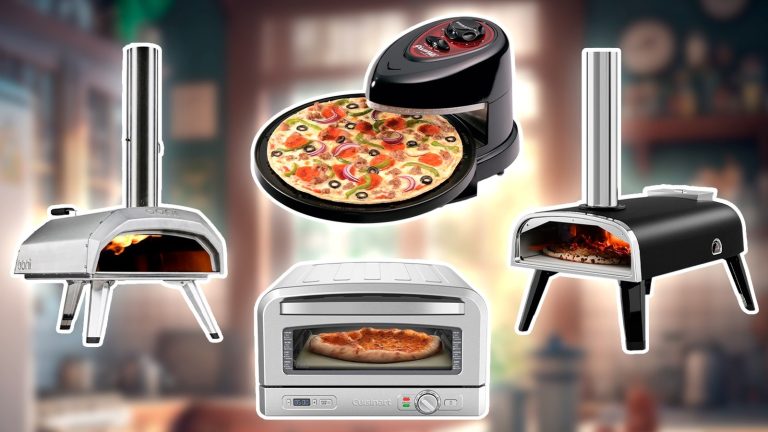The term “vintage” usually applies to clothes and furniture, but some of the long-forgotten foods of yesteryear have a certain classy, nostalgic mystique that earns them a spot in vintage territory. Post-industrial era American foods are defined by snacks, which were famously drenched in mayonnaise, included a lot of cheese, and had canned fruit in places where it absolutely didn’t belong. But — like jeans, handbags, and armchairs –foods from the post-war epoch and late 20th century are, slowly but surely, coming back into style, whether you want them to or not.
To take a glimpse into a bygone era of eats, we’ve put together this list of popular mid-to-late-century snacks that have long since disappeared from our cocktail party spreads and lunch boxes. Some of these snacks are recipes that those gen-Xers among us might vaguely remember mom whipping up on a Saturday afternoon, and others are commercial snacks that were staples in the school lunchroom but have since been cast away into the snack cemetery. So, let’s dive into these antiquated goodies — we’ll let you decide which ones deserve a comeback in the 21st century.
Popcorn balls
Those of you old enough to remember handmade treats given out on Halloween might remember popcorn balls. These spooky, wholesome, sweet-and-salty delights were offered to trick-or-treaters in lieu of candy or stacked on a table at a Halloween party as sweet finger food. Nowadays, giving out homemade goodies to kids on Halloween is frowned upon, so you don’t spot popcorn balls all that often. However, there’s no reason these treats should disappear into the ether; they make a healthier alternative to candy and other commercial sweet snacks and are pretty easy to whip up.
Popcorn balls generally consist of popped popcorn coated in homemade simple syrup, then formed into balls and left to rest until they harden. You’d often find this snack flavored minimally, with just syrup and salt, but they were versatile enough that creativity with flavors and add-ins was encouraged. Popcorn balls sometimes involved Halloween candy — especially candy corn – either melted down in the syrup or stuffed into the balls to give them a unique burst of Halloween-y flavor.
Cheese dreams
Cheese and bread have been an iconic ingredient pairing for eons. It’s loved by all, cheap, and easy to make with such ubiquitous ingredients that cheese sandwiches have been a part of the American diet for 100 years. The cheese dream sandwich could be traced back to the World War I era, but it gained popularity during the infamous influx of two-or-three-ingredient recipes during the Great Depression.
The name “cheese dream” is given to a host of cheesy, old-school recipes, so we’ll take a look at just one classic iteration. This recipe consisted of small, thin slices of white bread (think tea sandwich-size) topped with sliced cheese and then fried in butter or oil. They could be enjoyed as-is or topped with various veggies or spreads, like tomato or mustard, and then served as hors d’oeuvres at a party or as a quick, satisfying snack for kids. The cheese dream was essentially the greasier grandparent of the classic grilled cheese that we all adore today.
Pizza Spins
Have you ever wished that pizza was much tinier, crunchier, and shaped like a pinwheel? Well, there was a time when General Mills sought to fill that void in the American diet. Pizza Spins was a cracker-like snack that, despite not looking like much, contained all the flavor of a cheesy, tomatoey, fresh pizza pie. Pizza had a strong grip on the tastes of the ’60s and ’70s. During this time, pizza delivery became a widespread method of getting a quick, cheap dinner on the table, so the taste for the dish was insatiable in the U.S.
Pizza Spins had a relatively short lifespan compared to other snacks from big brands. General Mills introduced the cutesy Italian pinwheels back in 1968 and discontinued them in 1975, much to the chagrin of those few out there who still had a taste for the simple yet surprisingly unique snack. Today, there are small fan clubs in the form of Facebook groups and the like dedicated to Pizza Spins, but sadly, these folks might have to stick to lesser Combos and Bagel Bites; it doesn’t look like Pizza Spins are coming back anytime soon.
Jell-O salad
If there’s one dish that could encapsulate the culinary traditions of post-war America, it’s Jell-O salad. Gelatin was all the rage during this time, having come into prominence during the Depression, when food needed to be stretched as far as possible. Home cooks were encouraged to get creative with Jell-O (a little too creative, if you ask us), which included infusing it with ingredients that normally wouldn’t be caught dead on the same plate as the colorful, bouncy dessert that defines our childhoods.
There was no one specific recipe for Jell-O salad. The most palatable versions were sweet treats involving fruits, nuts, and marshmallow garnishes, but savory Jell-O salads also graced America’s kitchens as a snack or side dish. Lime Jell-O was infused with vinegar to make it taste less sweet and then stuffed with everything from mixed veggies to tuna to veal. The infamous gelatin concoction was usually made in a mold and then delicately sliced and garnished, giving a refined, sophisticated appearance to a food that, nowadays, seems like something you’d only eat on a dare.
Salmon or tuna mousse
Today, mousse is typically reserved for chocolate, but back in the day, it was associated with the opposite of chocolate: fish. Salmon and tuna mousse consisted of pureed fish (usually from a can), spices, and minced veggies, along with mayonnaise and gelatin, otherwise known as the two major food groups of the ’70s. The fishy, hummus-like spread was then served with crackers or toast as a party snack.
The best thing about 1970s fish mousse was that it was usually molded into the shape of a fish before it was laid out as part of a spread. The fish mold was decorated with olives for eyes and spices or sliced veggies to create the appearance of scales. Fish mousse isn’t completely gone from the modern party snack scene, but you certainly won’t find it in the shape of a fish. Nowadays, fish mousse is much more boring, often coated with everything bagel seasoning and served as an appetizer. Although most kitschy culinary creations of the post-industrial era deserve to be lost to history, we wouldn’t mind it if food molds had a comeback — they’re just so much fun.
Koogle
The trend of funky, artificially flavored snacks for kids extended from the ’70s into the 2000s but has since been squashed by a heavier focus on health — a necessary sacrifice that left behind plenty of fond, sugary memories. One of the products that defined this epoch of fun kid’s snacks was Kraft’s Koogle, a peanut butter-based spread that came in four distinct flavors: cinnamon, banana, chocolate, and vanilla. The spread debuted in 1971 and disappeared later in the decade for unknown reasons.
Old ads for Koogle advertised its kid-friendly flavors and the fact that it didn’t stick to the roof of the mouth. We’re not entirely sure how it managed to evade stickiness, but we imagine it was because this snack was more sugar than actual peanut butter. The mascot for Koogle left a memorable mark on the world of vintage snacks. He looked almost like a meatball with frog legs, had multiple eyes looking in different directions, and a tuft of blue hair. Maybe the Koogle-induced nightmares of ’70s kids are what prompted the flavored spread’s erasure from snack shelves.
Cocktail meatballs
The elegance and sophistication of a late-century cocktail party can be defined by its appetizers. Cocktail meatballs were one of the most popular hors d’oeuvres at parties in the ’70s, and there’s a good chance you have an older family member who still brings these sweet-and-savory delights to family gatherings. They haven’t completely disappeared from American cuisine, but they’re not nearly as ubiquitous as they were back in the days of shag carpets and disco.
The 1970s saw the emergence of the slow cooker, which completely transformed American cuisine. Most cocktail meatball recipes require a slow cooker, but that’s not what sets them apart from standard, Italian-inspired meatballs. Cocktail meatballs are cooked in grape jelly, making a weird but wonderful combination of sweet and savory — not unlike ham and pineapple or pork and applesauce. The grape jelly is usually accompanied by chili sauce, but some recipes call for barbeque sauce or ketchup to give the rich meat and sweet jelly a touch of vinegary tang.
Space Food Sticks
Space Food Sticks, developed by Pillsbury in the ’60s, started as cube-shaped, nutrient-dense sustenance for astronauts. They were developed under government contract to provide a viable way for NASA astronauts to get their daily intake of vitamins and minerals without having to cook and bake (not the easiest task to accomplish in zero-gravity). Eventually, NASA requested that Pillsbury make a snack that astronauts could eat with their helmets on, so the space food went from a cube to a stick to fit through a tiny slot in the helmet. Space Food Sticks even joined Neil Armstrong and Buzz Aldrin on the legendary Apollo 11 mission as part of their emergency food supply.
The public was enthralled with NASA and space travel at the height of the space race in the ’60s, so it’s no wonder that people took a liking to Space Food Sticks. They hit the consumer market as a slightly modified, longer version than what was sent to space with the astronauts, but just as nutritious. For regular consumers, Space Food Sticks were individually wrapped, came in chocolate, peanut butter, and caramel flavors, and were designed for kids and adults alike.
Pineapple sandwiches
The pineapple sandwich is heavily associated with the Southern United States, where it’s still somewhat alive and well, but the sandwich’s origins go as far back as the late 19th century. During this time, the process of canning took the U.S. by storm; dishes could now be made with exotic ingredients from across the world, unlocking a whole new world of culinary possibilities. It’s unclear exactly where the pineapple sandwich came from, but Alabama claims it as its own, asserting that it — completely by coincidence — was first made in the town of Pine Apple, Alabama, in 1898.
The pineapple sandwich starts with white bread slathered with mayonnaise (preferably Duke’s, to keep with the Southern theme), and then pineapple rings are stacked between the mayo-covered bread. And that’s it, believe it or not. Canned pineapple is a must on this sandwich because fresh pineapple isn’t as sweet and juicy. It sounds strange, and its flavor certainly won’t blow you away, but the sandwich makes for a refreshing and eerily creamy treat during a hot Alabama summer day.
Whistles and Daisys
Everyone knows Bugles, the horn-shaped corn snack with a unique, salty flavor, but few are aware of Bugles’ cousins, if you will: Whistles and Daisys. Bugles, Whistles, and Daisys all debuted simultaneously, back in 1964, as the first-ever snacks from General Mills. All three snacks came in either cereal boxes or, oddly enough, in pop-top cans, making them an unlikely entry into the world of discontinued canned foods.
It’s not clear why Bugles were the only snack of the trio to withstand the test of time, but it may be that they had a more approachable flavor. The fire-roasted corn flavor of Bugles is iconic and hasn’t changed much since its inception. Whistles, however, had a cheese-like flavor, while Daisys were described as tasting like a popover. Whistles had the most boring shape, resembling a short tube. Daisys were much more fun and looked like — you guessed it — a daisy, complete with a round center with multiple petals springing out.
Cheese balls
Along with cocktail meatballs and fish mousse, cheese balls were hailed as one of the most iconic party snacks of the 1970s. These retro appetizers were typically made from cream cheese, sharp cheddar, chives, Worcestershire sauce, and spices like onion and garlic powder, parsley, and oregano. The mixture was formed into a ball and then covered with minced toasted pecans. Cheese balls are usually accompanied by a cheese knife so guests can smear the soft, popular party appetizer on crackers.
The beauty of the humble cheese ball lies in its versatility. Although the above recipe represents the cheese ball in its standard form, it could be adorned with bold flavors and ingredients for a unique party treat. Minced fruit could add a burst of sweetness, or chopped meats, like bacon, could cover a cheese ball to make it extra decadent and savory. Cheese balls haven’t completely disappeared from contemporary party spreads. They’re starting to come back in style. But they’re still not nearly as common as they were from the ’50s to the ’70s when ultra-rich foods were a staple in American diets.
Ham banana hollandaise
We’re pretty sure even the folks who invented Jell-O salad and pineapple-mayonnaise sandwiches would gag at the thought of a banana, ham, and hollandaise snack. This fever dream of a dish was published in McCall’s Great American Recipe Card in 1973, under the contemporary cooking category. We’re not certain if this dish was intended to be the next big thing at cocktail parties in the late century or if it was all one big joke, but we’ll acknowledge that, unlike the other dishes on this list, this wasn’t a particularly popular appetizer in the ’70s.
Ham and bananas hollandaise involved wrapping bananas in sliced deli ham, using mustard to stick the ham to the bananas, and then lining the dastardly ham-and-mustard-wrapped bananas in a baking dish. The appetizer was then covered with hollandaise sauce made from a powdered sauce packet (a pantry staple in the late 20th century) and lightly baked. We all know this decade had a penchant for cursed levels of creativity, but come on — even disco had its limits.
Danish Go-Rounds
Who knew that toaster pastries were such a time-honored morning snack? We all know and love Pop-Tarts, but few are aware that the pastry, which debuted in 1963, had some lesser spin-offs during that time, one of which was Kellogg’s Danish Go-Rounds. The year 1968 saw the emergence of these spiral-shaped pastries, which were full of sweet fruit filling and topped with frosting. They were designed to eat as-is or go in the toaster and emerge soft and gooey, just like a fresh-from-the-bakery treat. In 1976, they were slightly modified and had the name changed to Danish Rings before being discontinued to make room for more popular toaster pastries in 1980.
Danish Go-Rounds came in flavors like brown sugar and strawberry, much like the toaster pastries of today. Unlike other sweet toaster snacks, Danish Go-Rounds (and subsequent Danish Rings) were marketed to adults as well as children, with TV ads showcasing that they were made with real fruit and tasted like a genuine danish from your hometown bakery.
Rumaki
Rumaki is a symptom of the mid-century obsession with Polynesian-themed recipes and restaurants à la tiki bars combined with the popularity of cocktail party hors d’oeuvres. Ingredients that are commonplace for us today were seen as exotic and posh back in the day, so serving dishes made with things like teriyaki sauce and vegetables was an easy way to add a touch of class to your party.
Rumaki isn’t the most widely approachable appetizer to the American palate, but for those who love the deeply rich, velvety flavor and texture of organ meats, rumaki would have been right up your alley. It was made with chicken livers and water chestnuts wrapped in bacon and coated with a sweet teriyaki glaze. The melty, soft meat and crunchy water chestnuts offered the perfect texture contrast, while salty bacon and sweet teriyaki gave the appetizer a classic, bold flavor. Trader Vic’s — a famous tiki bar chain and home of the original mai tai — popularized rumaki, making it a U.S. creation and not one of Polynesian origins, despite its perceived exoticism.
Pear salad
We’d like to present yet another apropos-for-the-decade fruit-based dish, and you better believe it involves mayonnaise. Pear salad (in the ’70s, the term “salad” was clearly used very, very loosely) involved half of a canned pear (never fresh). The fruit was topped with a generous dollop of creamy mayo — Duke’s, naturally — and a sprinkling of mild, shredded cheddar. It was sometimes served on a tiny bed of lettuce. Adding a maraschino cherry on top was optional, but it gave the dish a bold pop of color that either made it look significantly more appetizing or far more dastardly — we honestly can’t tell.
Like many of the other disturbing fruit concoctions of the late 20th century, pear salad is typically associated with the Southeastern United States. The dish was sometimes reserved for parties, holidays like Easter, or cook-outs, often during the summer months when fruit is a constant craving. Love it or hate it, there’s no denying that the aesthetic of pear salad quite perfectly encapsulates the colorful decade that made it a sensation, so it’s certainly earned its place in the food history books (and it can stay there, please).





